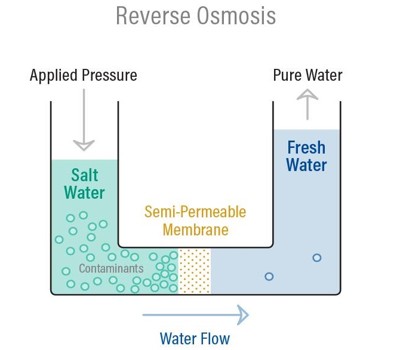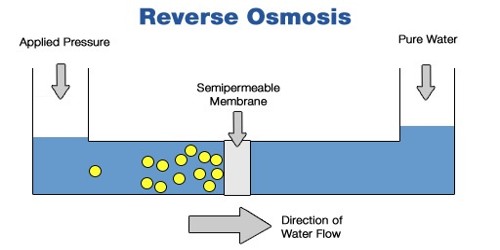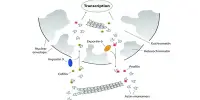Reverse Osmosis is how you can get small particles out of the water, even in solution, by forcing it through a filter (a membrane). It is one of the processes that makes desalination (or removing salt from seawater) possible. The particles in the water are left on the other side of the sheet, while the water travels through it. It is a technology that is used to remove a large majority of contaminants from water by pushing the water under pressure through a semi-permeable membrane. It has been a recognized technology for more than a century and commercialized since the 1960s.
Reverse osmosis water filter system is a water purification system that uses filtration cartridges which include pre-filter, thin semi-permeable membrane, post-filter, and other accessories to remove undesirable materials and provide clean water for drinking and other purposes. It is the process of Osmosis in reverse. This process is found throughout nature. Plants use it to absorb water and nutrients from the soil. In humans and other animals, kidneys use osmosis to absorb water from the blood. Whereas Osmosis occurs naturally without the energy required, to reverse the process of osmosis you need to apply energy to the more saline solution.

A reverse osmosis system is built around its individual membranes. It works by using a high-pressure pump to increase the pressure on the salt side of the RO and force the water across the semi-permeable RO membrane, leaving almost all (around 95% to 99%) of dissolved salts behind in the reject stream. The membrane allows water to flow through but blocks out larger molecules, like contaminants.
Application
The main use is for purifying saltwater, but it can also be used to purify other substances. It is a continuously operating treatment technology that uses pressure to pass source water through a thin membrane and thereby separate impurities from water. It is used to produce highly purified water for drinking water systems, industrial boilers, food and beverage processing, cosmetics, pharmaceutical production, seawater desalination, and many other applications. It does not require hazardous chemicals and it reduces water and sewage use costs.
















